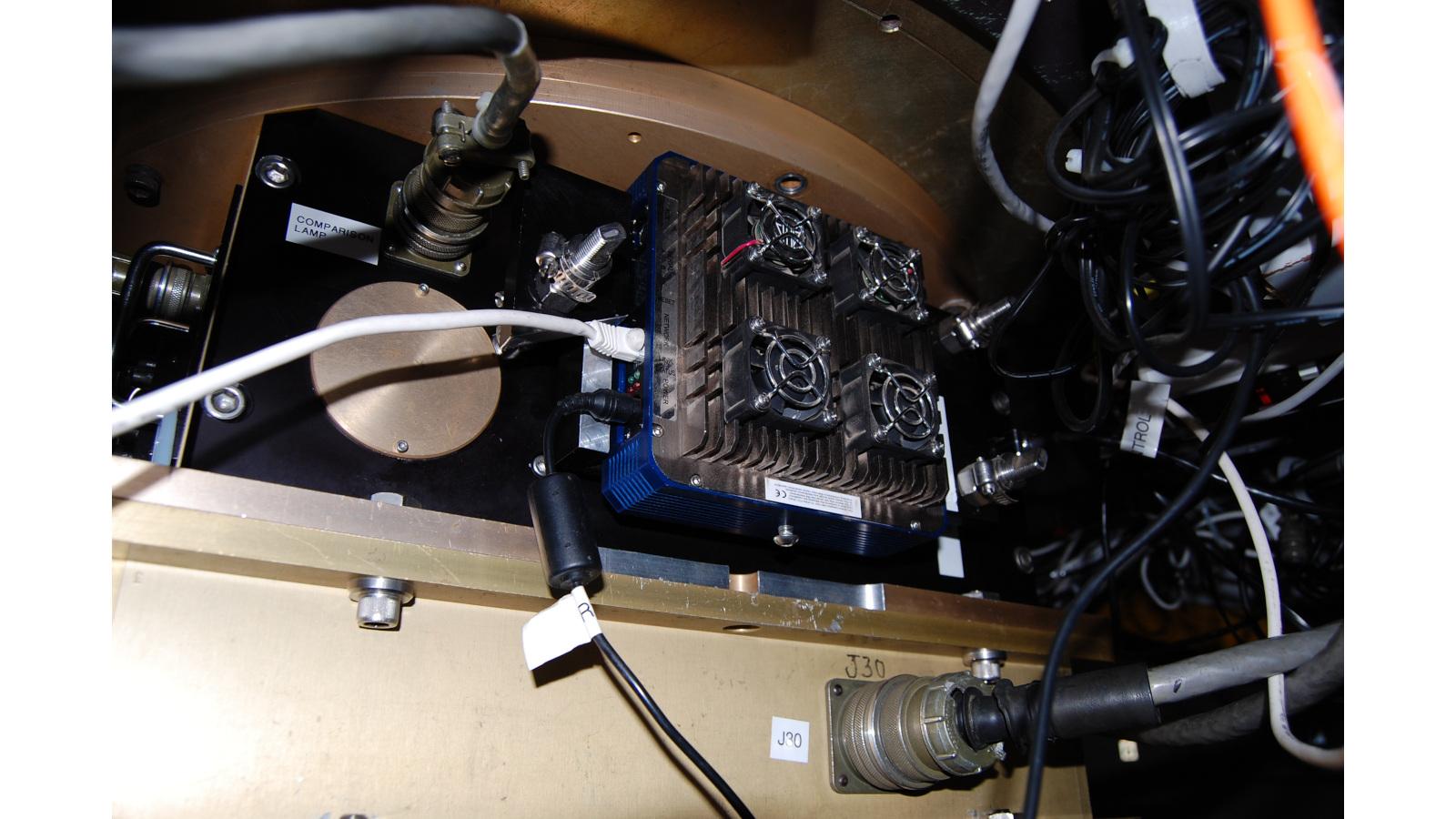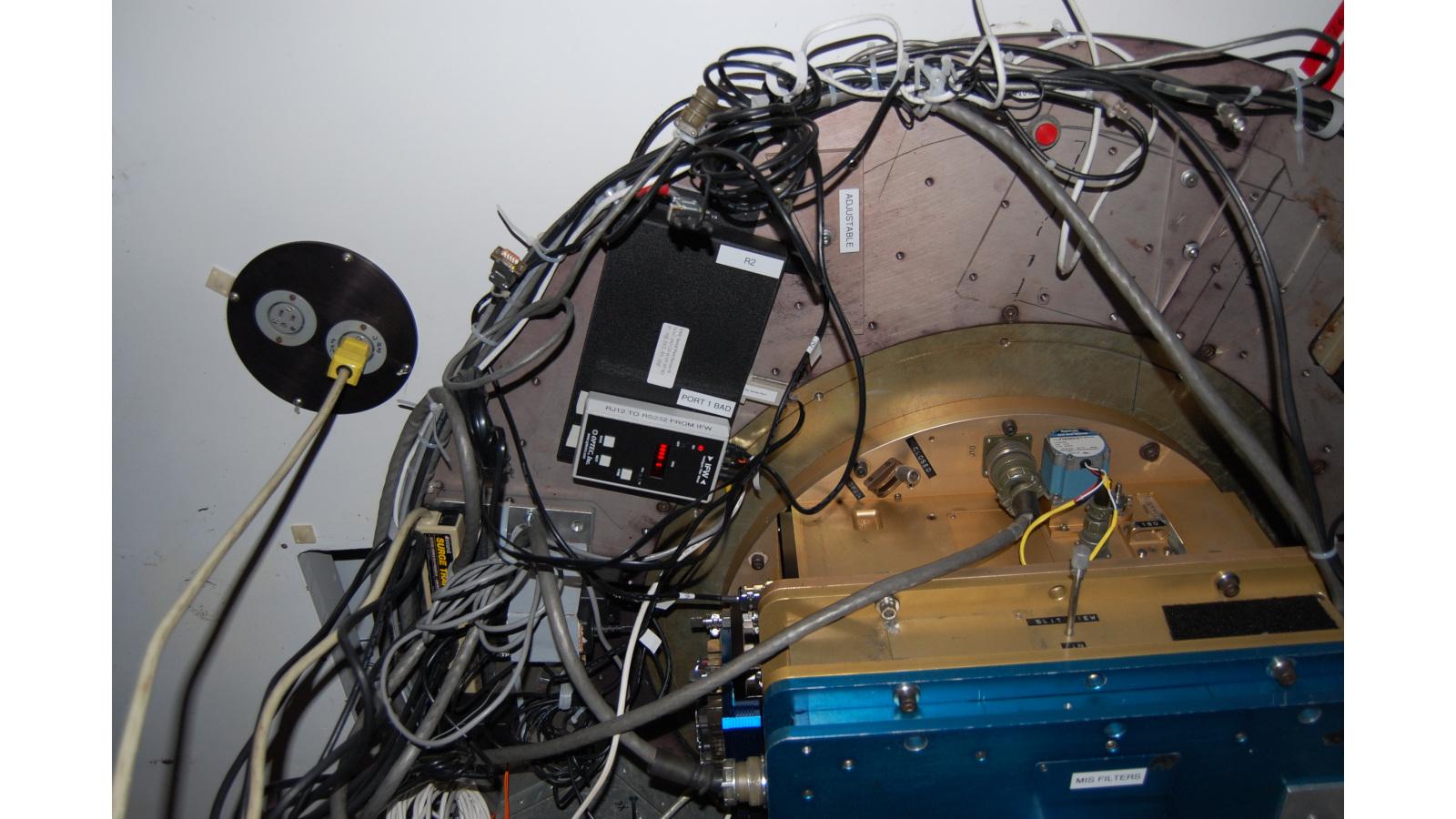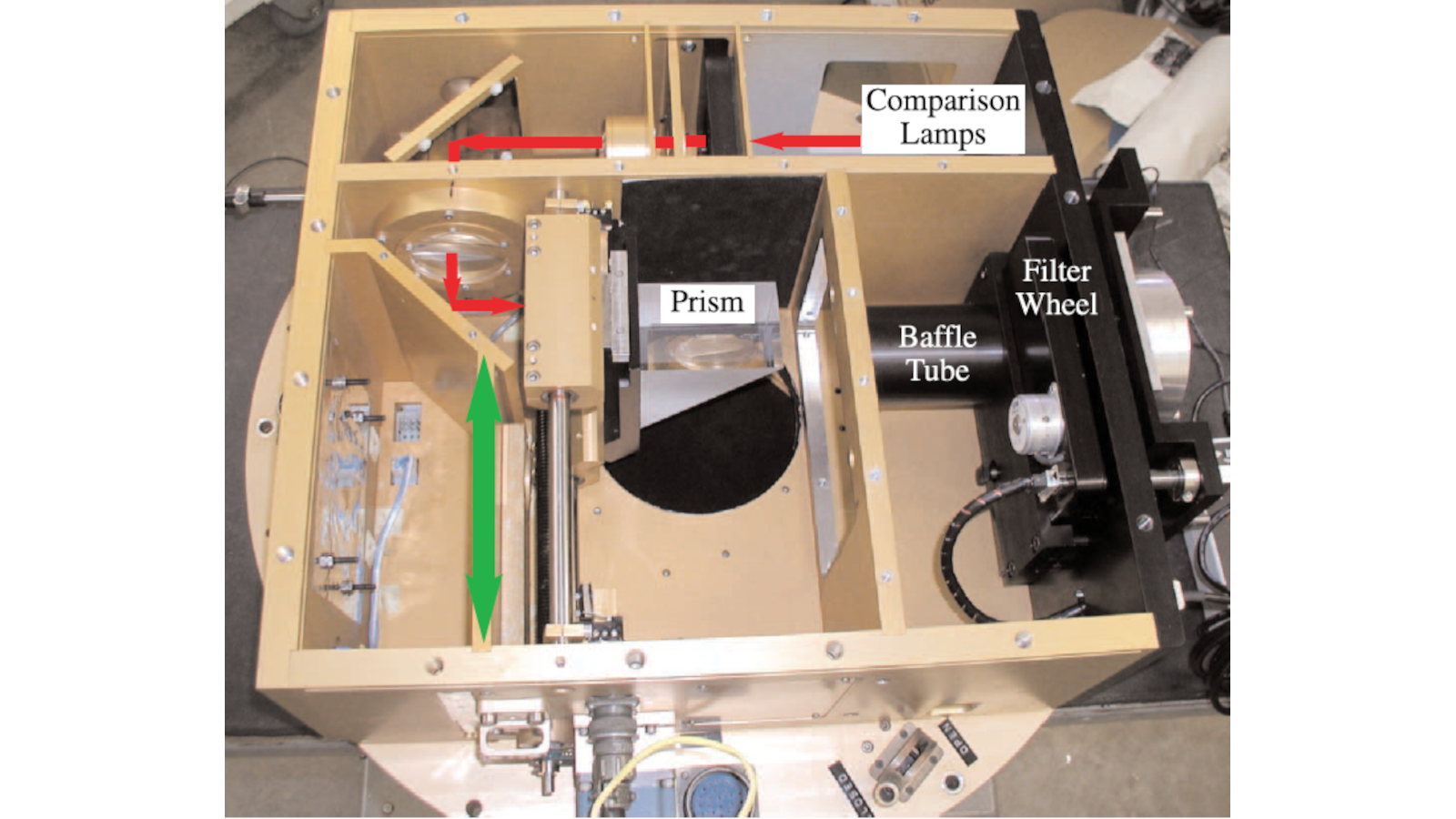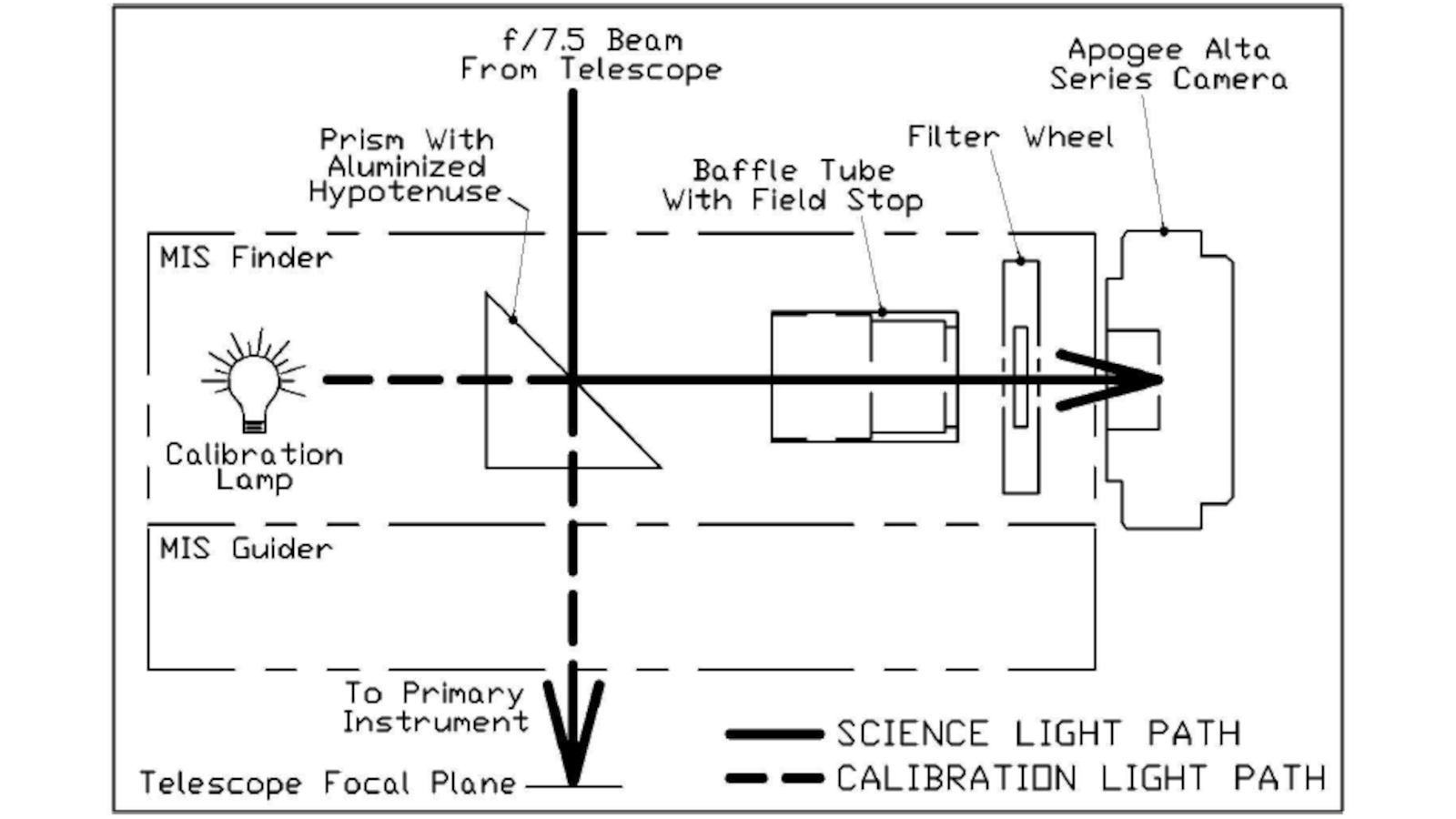RETROCAM
RETROCAM was designed for the unused auxiliary instrument port of the MDM 2.4m Hiltner Telescope's Multi-Instrument System (MIS). We modified the calibration pickoff mirror in the MIS to redirect light from the telescope to the MIS side-port when the other side of the pickoff was directing calibration light into the main instrument (like a spectrograph). RETROCAM had a 5-position filter wheel and a 5x3 arcminute field of view. It was designed to allow the 2.4m to conduct optical monitoring projects requiring long time baselines but using only a small fraction of a night. It is permanently mounted on the 2.4m and so co-exists seamlessly with the direct Cassegrain focus instrument, making the 2.4m a 2-instrument telescope that can switch between the main instrument and RETROCAM in about 1 minute. It was used to conduct a number of synoptic studies, including multi-year photometric monitoring of lensed quasars, from 2004 until its retirement in 2020.
Instrument Specification
- Project type: Instrument
- CCD Camera: APOGEE ALTA-E55 with e2v CCD55-20 1152x770 CCD
- Field of View: 4.97 × 3.32 arcminutes
- Filter Wheel: 5-position Optec IFW
- Filter Format: 50mm round
- Filters: SDSS griz + one user filter
- Additional Systems: modified MIS pickoff mirror system
- Telescope: MDM Observatory 2.4m Hiltner Telescope
- Years active: 2004-2020
- Reference: Morgan et al. 2005, AJ, 129, 2504
Instrument Facts
- RETROCAM was a student-led project that was part of Chris Morgan's PhD dissertation
- The first facility instrument that used a commercial CCD camera and filter wheel
- Modifications of the MIS top box for RETROCAM led to a later modernization of the MIS control systems.
- Elements of the RETROCAM scripting language design became the basis of the later MODS instrument control language
- RETROCAM was also used as a finder camera for telescope optical alignment and pointing map generation
Instrument Team
Chris Morgan (Project Lead)
Paul Byard (Optical Design)
Mark Derwent (Lead mechanical engineer)
Tom O'Brien (mechanical engineer)
Dave Brewer (instrument maker)
Dave Steinbrecher (instrument maker)
Richard Pogge (data acquisition software)





